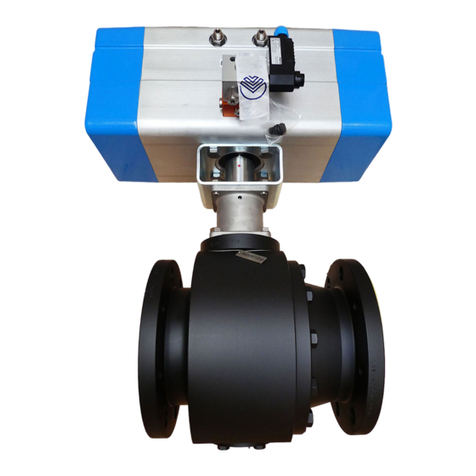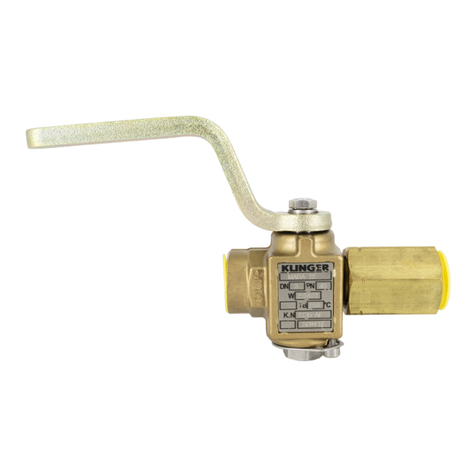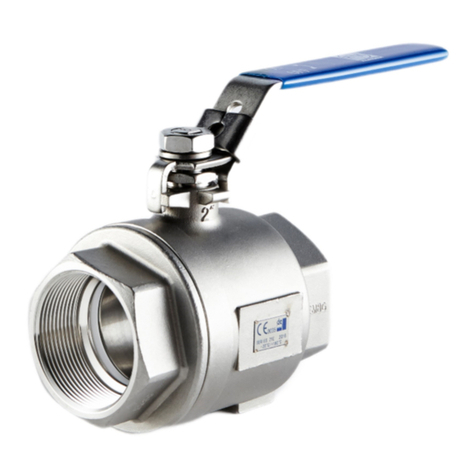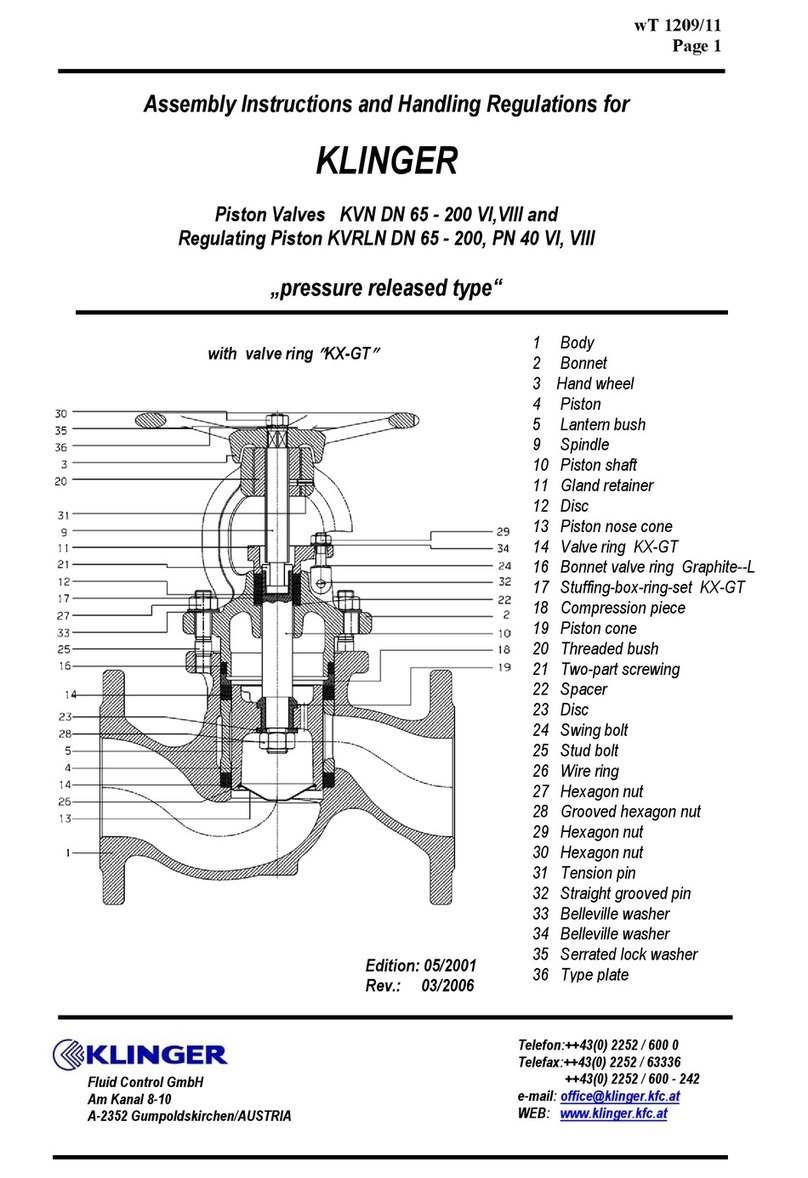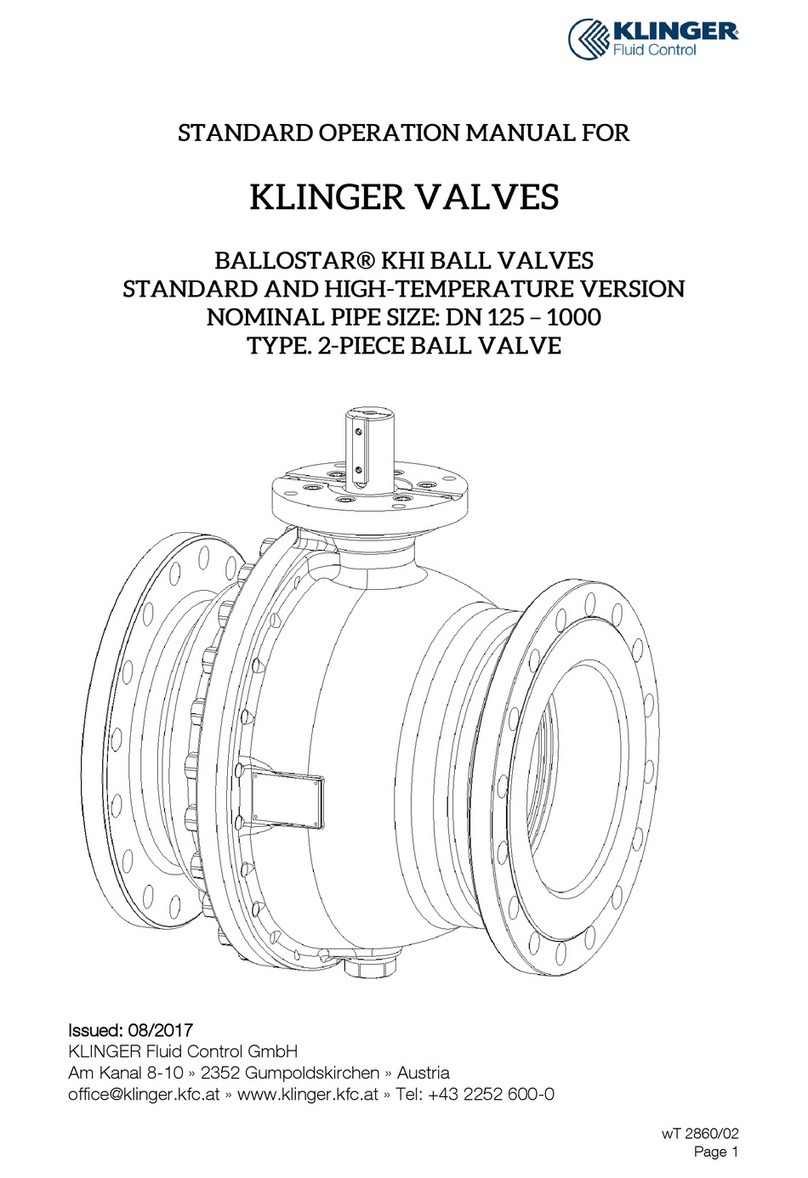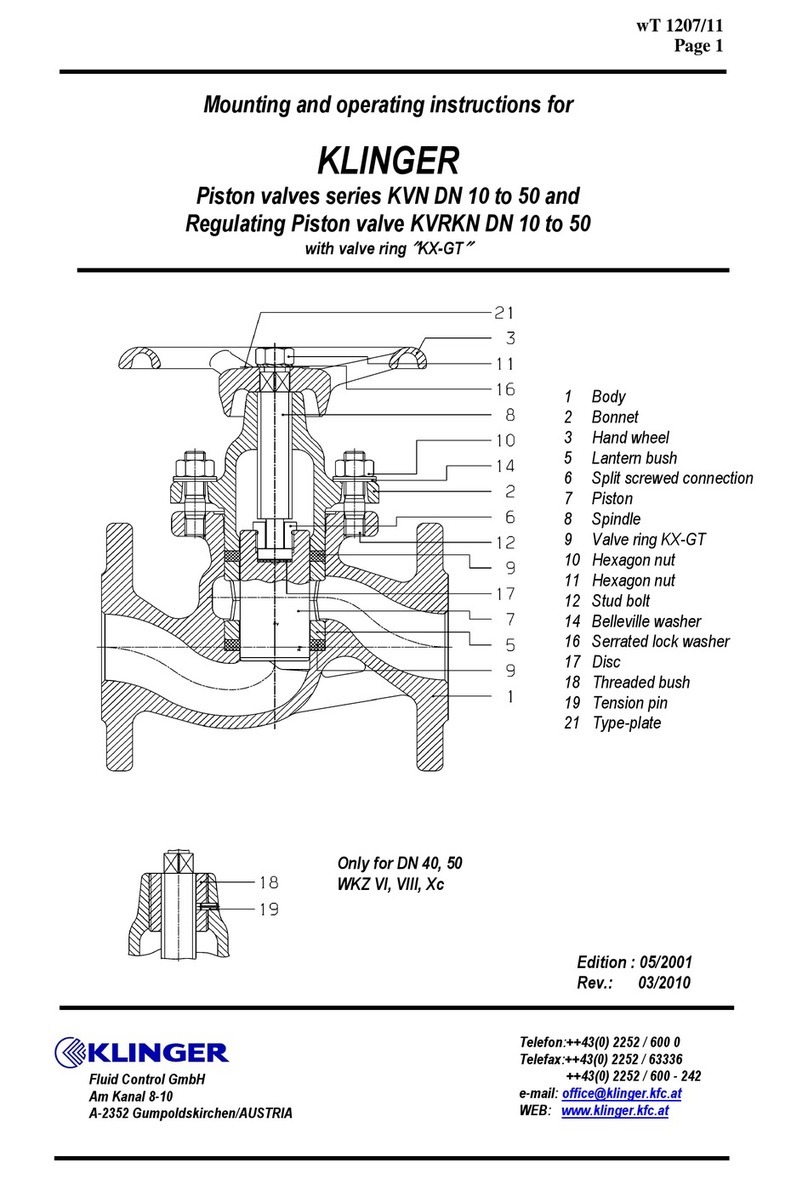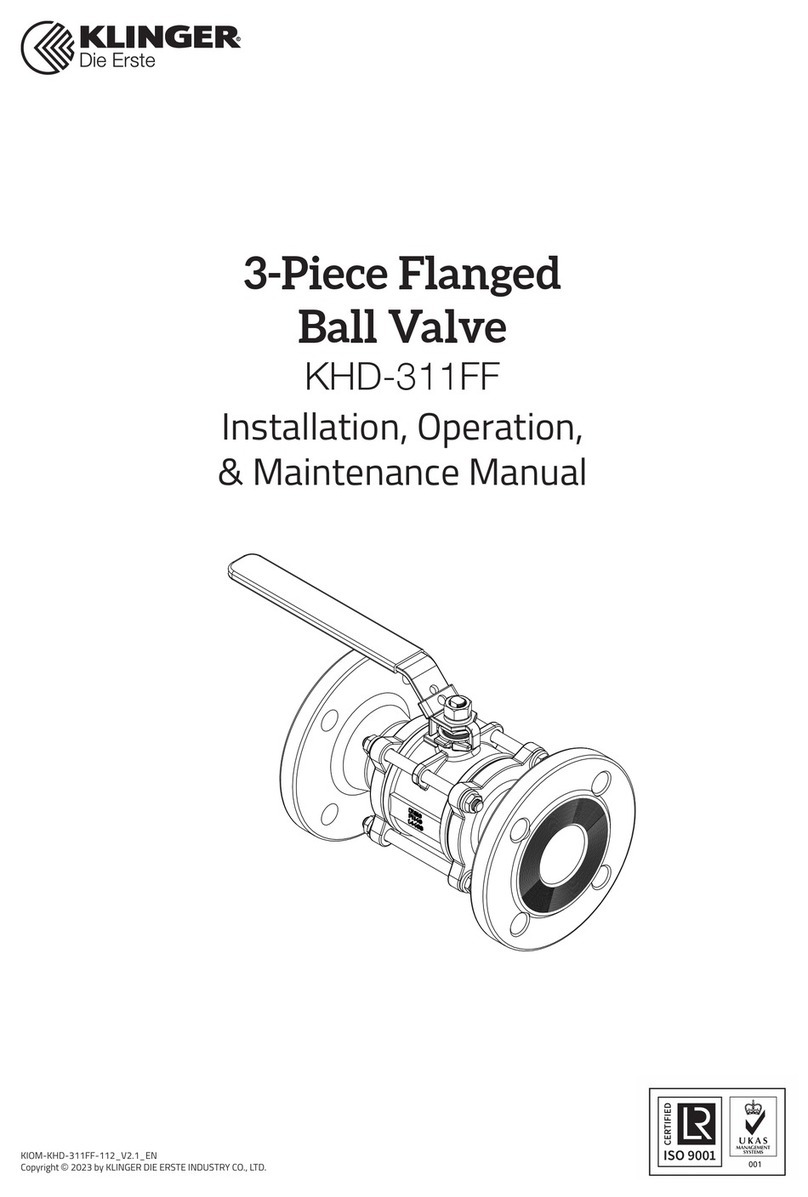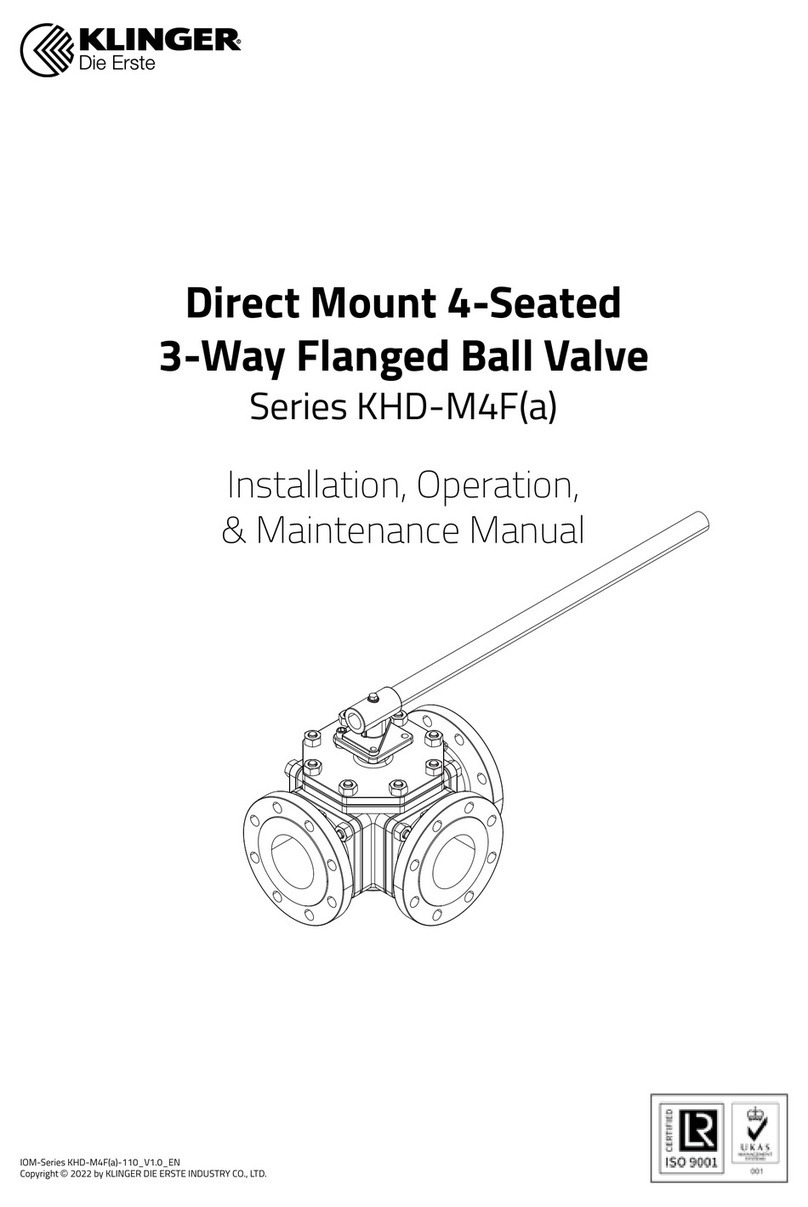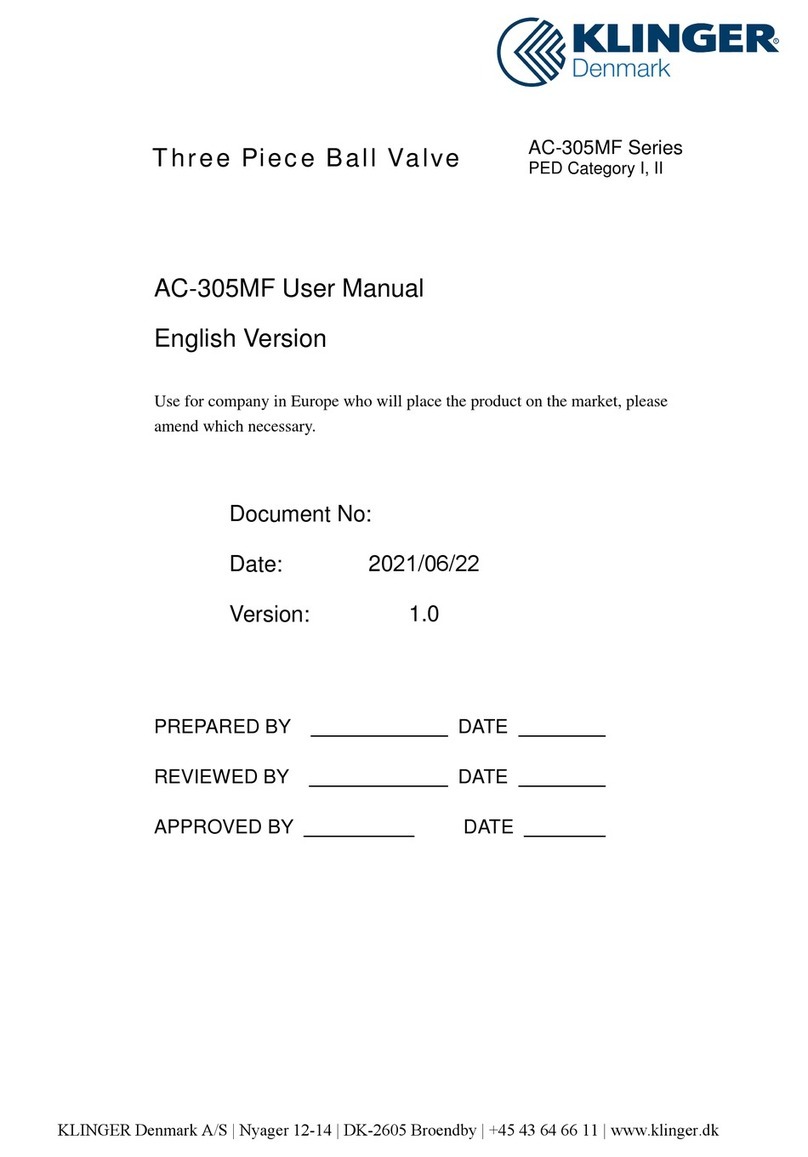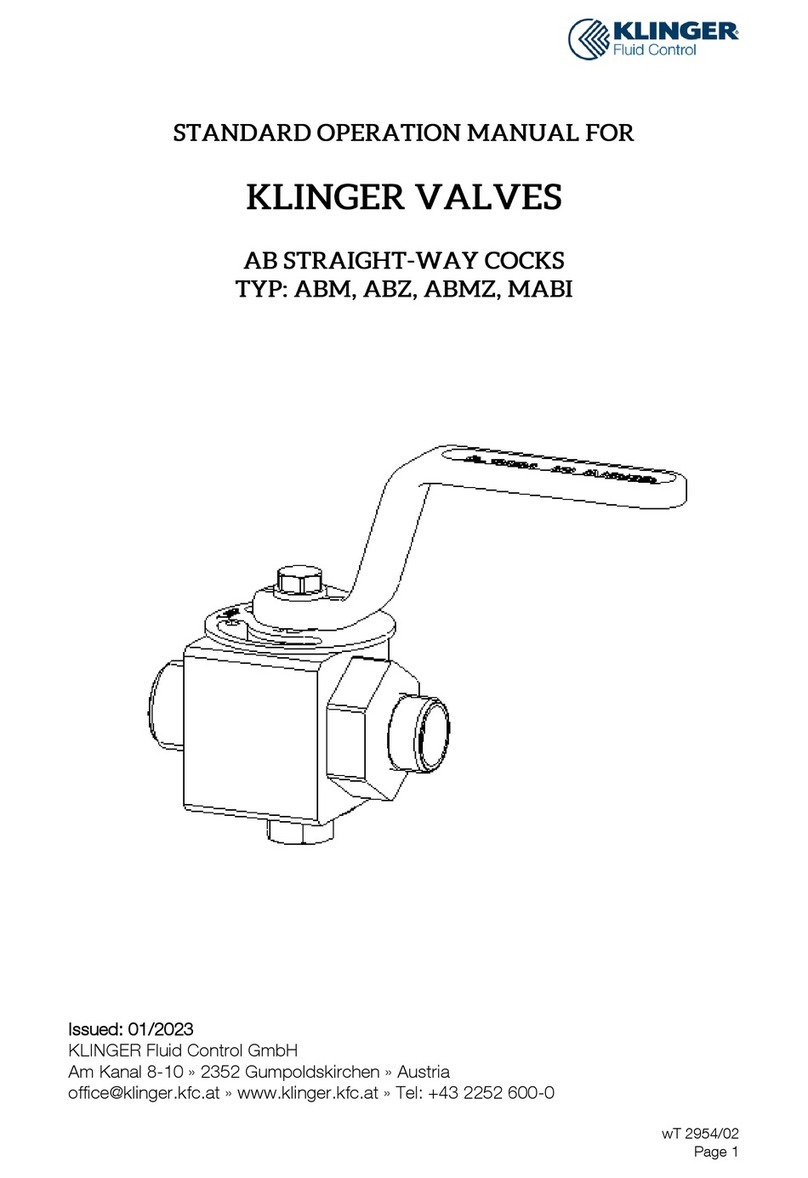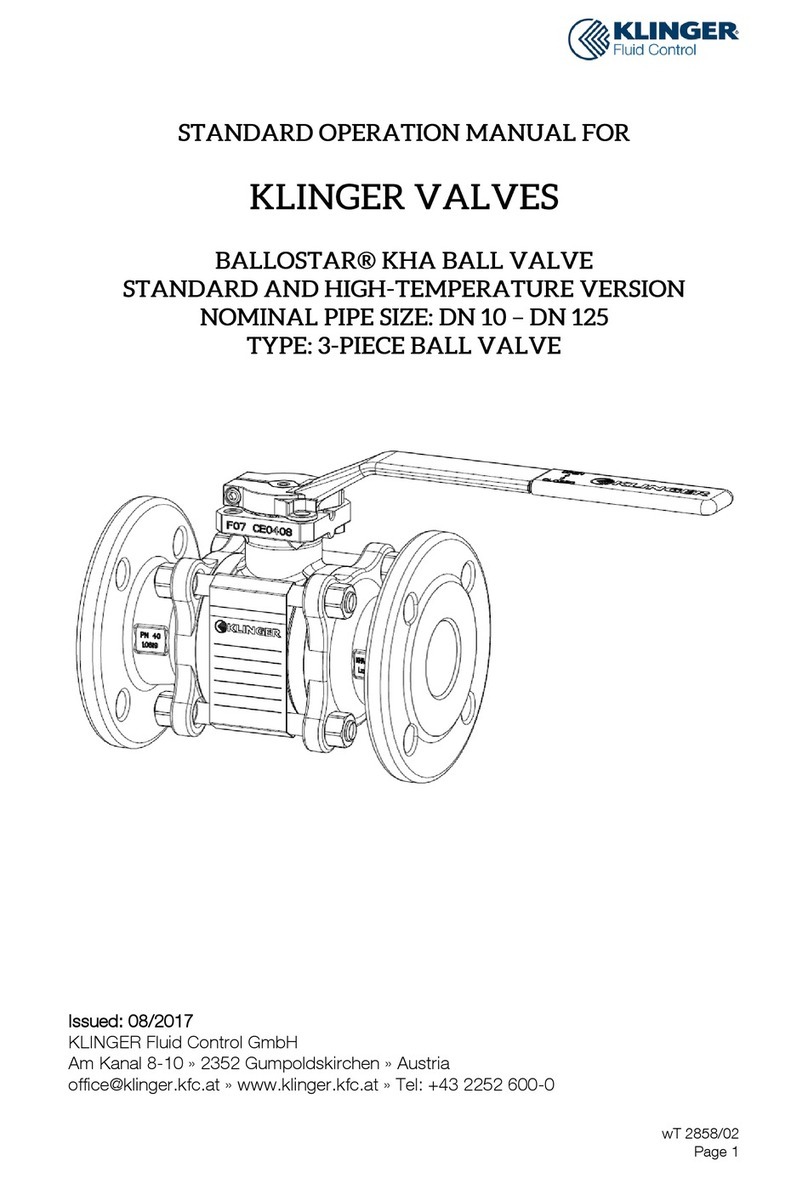
wT 2575/11
Page 7
INSTRUCTIONS FOR TREATMENT
KLINGER Ballostarball valves are delivered in OPEN position. To protect them against dirt
contamination and damage the flange ends are covered with plastic caps. We recommend removing the
caps not until you want to install the valve. KLINGER valves should be stored in closed rooms with non-
aggressive ambient atmosphere and where they are protected from moisture and dirt. Furthermore the
maximum temperatures and pressures, specified in the P/T-diagrams, should not be exceeded during
operation. Just under these specified conditions mentioned before our warranty for the determined
duration is valid. Please notice, this warranty does not include valve components that are subjected to
corrosion, erosion and wear during operation
If cover- or shrink foils are used, you have to have to make sure, that the atmosphere within the foil is
free of condensation. For storage in dusty rooms appropriate protective measures are recommended.
To avoid confusion we suggest to name and store parts according to their shipping documents.
The temperature in the storage areas should range between -20° C and +50° C. Fast changes of
temperature should be avoided (creation of condensation- and perspiration water).
Instructions for treatment and application are part of the shipment and should therefore be stored next to
the goods. This makes sure that all necessary information and documentation are passed on.
Changes in documentation which belong to the storage of KLINGER products are timely forwarded by
circular letters.
Damages which can result from inappropriate storage absolve KLINGER from obligations deriving from
guarantee, warranty and product liability.
